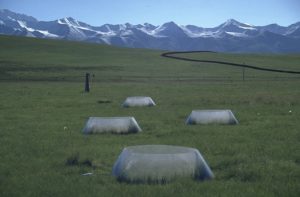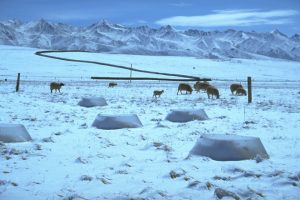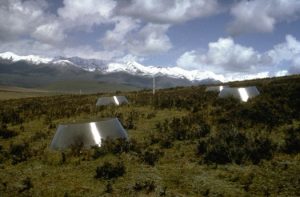ITEX
The International Tundra Experiment is a coordina ted network of experiments focusing on the impact of climate change on select plant species, community composition, and ecosystem processes in tundra and alpine vegetation. ITEX uses a common warming method to examine how the tundra biome may respond to climate change. The program began in 1990.
ted network of experiments focusing on the impact of climate change on select plant species, community composition, and ecosystem processes in tundra and alpine vegetation. ITEX uses a common warming method to examine how the tundra biome may respond to climate change. The program began in 1990.

Today, there are more than two dozen circumpolar and alpine sites that participate in the ITEX program.
Tibetan Plateau ITEX Site
The Tibetan Plateau ITEX site was established in 1997, when Klein set up an experimental warming x grazing study at the Haibei Research Station on the northeastern region of the Tibetan Plateau in Qinghai Province. Klein established this project in collaboration with Dr. Zhao Xinquan, the Director of the Northwest Plateau Institute of Biology, Chinese Academy of Sciences. With funding from the U.S. National Science Foundation, Klein and colleagues have examined the independent and combined effects of warming and grazing on plant community composition, species diversity, productivity, carbon and nitrogen cycling, and key ecosystem services.
Results from the first five years of this experiment have been published in Ecology Letters, Global Change Biology, Ecological Applications and Ecosystems. ITEX-wide results are reported in the Proceedings of the National Academy of Sciences and Ecology Letters. As part of the International Polar Year, the National Science Foundation is currently supporting analyses of the longer-term (>10 years) responses to experimental warming and changes in control plots over time at the Tibetan Plateau site, the Colorado Niwot Ridge site and across the rest of the ITEX network.
